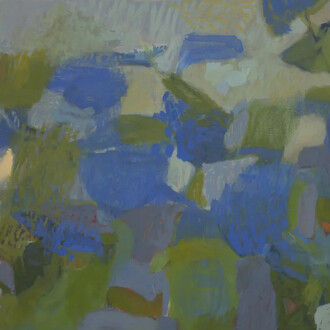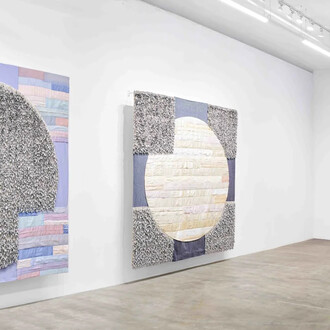Hermann Nitsch (b. 1938) is a missionary of art. Since 1957, Nitsch has been addressing the intensification of human existence through his ritualistic performance art, most prominently “The Orgien Mysterien Theater.” With more than 100 performances to date, these staged Dionysian performances are replete with religious sacrifices, mock crucifixion, blood, entrails, robes, dance and nude participants. Religious tropes are all here; the intensity resembles scenes from Grünewald’s Isenheim Altarpiece, the carcasses nod towards Rembrandt’s hanging meats.
The performance works summon the synthesis of all senses to reveal deep universal truths. In these interpretations of pagan ceremonies, Nitsch becomes the conductor who balances his premeditated Aktions with spontaneous incidents, culminating in orgiastic frenzy – a catharsis – commanding complete dissolution of restraints from its participants. He intensifies complex themes such as creativity, politics, capitalism, innocence, sex, violence, and even questions animal cruelty. If Art is Sin, Nitsch is on a quest for the betterment of the soul.
This is not art of blasphemy or malevolence for the Church. Quite the contrary; Nitsch venerates Christianity whose history is charged with symbols and ceremonies of sacrifice, and whose origins assumed some pagan ritual. Nor is this art that disregards animals; Nitsch does not sacrifice live animals, a fact not understood by detractors. He procures animal cadavers that have been slaughtered professionally for meat. That his performances and work at times engenders such strong protest is understandable – Nitsch’s art is certainly unsettling and, as with some of the great artists, it is both unyielding and revealing. It asks questions that are not always comfortable. It is fearless and necessary.
This exhibition at MARC STRAUS will feature the resulting products of these bold performances: the paintings. His paintings record the corporeal existence of its contributors on their lush surfaces – the hysterical shuffle of dance, a smear, a bloody mark. In the same vein as Gutai’s Kazuo Shiraga’s suspended performances, the anthropometric records of Yves Klein or the shamanistic displays of Jackson Pollock, Nitsch explores the human body as a vehicle for his paintings. Wittgenstein’s decree “The human body is the best picture of the human soul” comes alive in Nitsch’s paintings.
The paintings are beautiful abstractions symbolizing what it means to be human. They are graceful violent palimpsests, full of vitality but also quiet for contemplation, representing a life of originality, courage and dissidence.
















